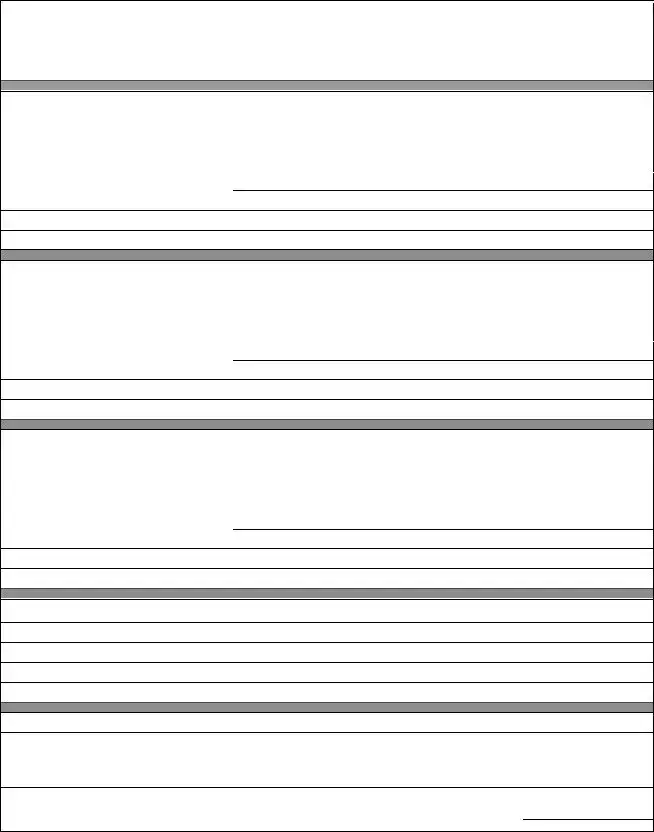The Federal Employment Application form is closely related to the Utah DWS-SDS 305 form in its structure and purpose. Both forms serve as tools for job seekers to apply for positions by providing personal information, employment history, and educational background. They both include sections for the applicant's contact information, job preferences, educational qualifications, and work experience, making it easier for employers to assess the applicant's suitability for the job. Just like the DWS-SDS 305 form, the Federal Employment Application also asks about veteran status, indicating an interest in providing equal employment opportunities to veterans.
A standard Job Application form used by many private sector employers shares similarities with the Utah DWS-SDS 305 form. These forms typically require applicants to list their personal details, job experience, and educational background. Like the DWS-SDS 305 form, these applications might inquire about the applicant's availability to start work, the type of employment they are seeking (full-time, part-time, temporary, or shift work), and their desired salary. Both forms aim to collect comprehensive information from job applicants to help employers make informed hiring decisions.
The Resume is another document that overlaps significantly with the information requested in the Utah DWS-SDS 305 form. While a resume is a document prepared by the applicant that outlines their qualifications, work history, education, and skills in a format of their choosing, the DWS-SDS 305 form collects similar information but in a standardized format. Both documents serve the purpose of presenting the applicant’s qualifications to potential employers, with the key difference being the structured nature of the DWS-SDS 305 form.
The Professional License and Certificate Registrations form is akin to the section in the DWS-SDS 305 form where applicants list any trade or professional licenses, certificates, or registrations they hold. This similarity is significant because both documents highlight specialized qualifications that could make an applicant more attractive for certain positions. These types of documentation are crucial in fields where specific certifications or licenses are required to legally perform the job, such as in healthcare, education, and various skilled trades.
Reference Check forms also bear resemblance to the part of the DWS-SDS 305 form where applicants provide a list of references. Both documents collect information about individuals who can vouch for the applicant’s qualifications, work ethic, and character. Gathering references is a common step in the hiring process, allowing employers to verify the information provided by applicants and gain insights into their work performance and suitability for the position.
The Educational History Transcript request form is another document related to the educational background section of the DWS-SDS 305 form. Applicants often must provide details about their educational qualifications when applying for jobs, which may include submitting transcripts or records of their academic history. Both the DWS-SDS 305 form and transcript requests collect information on the applicant's schooling, such as degrees earned, institutions attended, and areas of study, which are crucial for positions requiring specific educational qualifications.
The Work History or Employment Verification form overlaps with the employment history section of the DWS-SDS 305 form. These forms are used to verify an applicant's employment claims, listing past employers, job titles, responsibilities, and durations of employment. Both types of documents provide potential employers with a detailed view of the applicant's work experience, helping them to understand the applicant’s career progression and assess their suitability for new roles.
The Skills Assessment forms share a common goal with the section of the DWS-SDS 305 form where applicants list additional qualifications and skills, such as familiarity with certain machines, equipment, or tools. Both documents aim to identify the unique skills and competencies that candidates bring to a job. Highlighting specific skills relevant to the job can significantly influence hiring decisions, especially for roles requiring technical expertise or specialized abilities.


